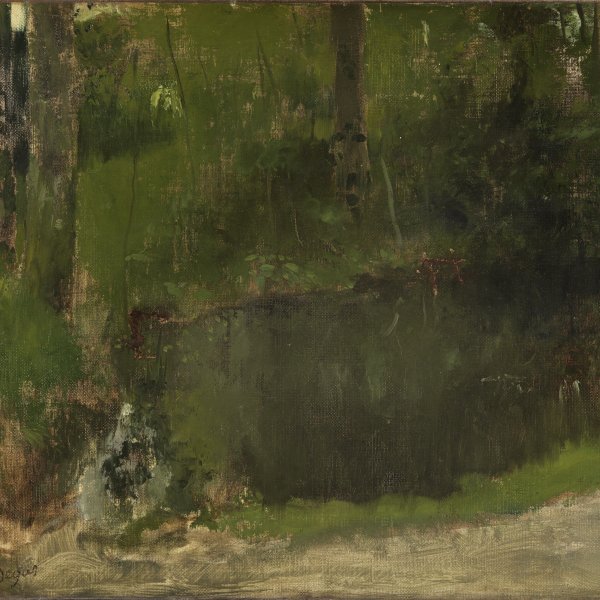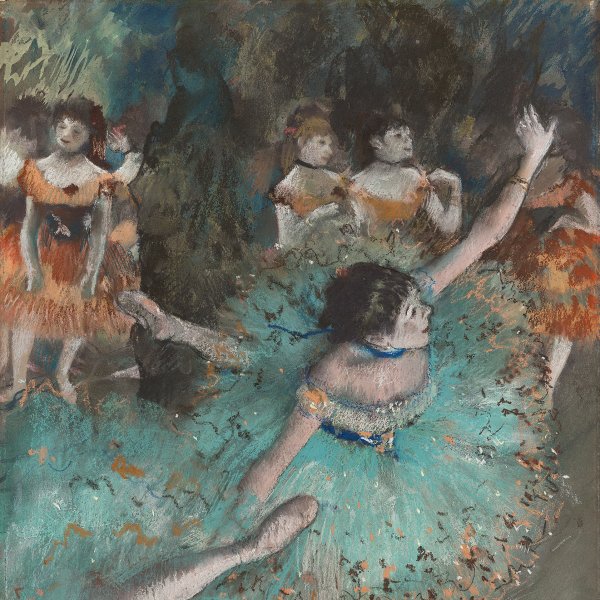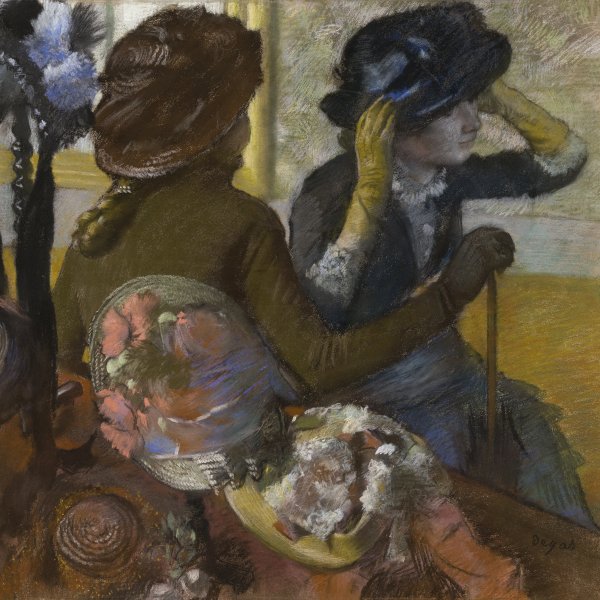Edgar Degas
Paris, 1834-1917
The eldest son of a wealthy Parisian couple, Degas soon dropped out of his law studies at the Sorbonne to take up painting. In 1855 he joined the studio of Louis Lamothe, a disciple of Ingres, where he acquired a sound academic grounding. From 1856 to 1859 he travelled around Italy copying the works of the Renaissance masters and, on returning, he settled permanently in Paris, where he painted a broad range of themes on life in the modern city that the French capital had become.
Despite his connections with the group of Impressionists, with whom he exhibited in seven of their eight shows, Degas was to an extent an anti- Impressionist. He viewed himself as a realist or naturalist painter, and his worship of Ingres’s finished drawing marked his entire output. In addition, he concentrated chiefly on studying the human body and, unlike the Impressionists, was never interested in plein air landscape painting or in capturing the changing atmospheric conditions. Nevertheless, like them, he was influenced by the new photographic technique and the newly discovered Japanese prints, and developed an interest in capturing movement. His variations on the same theme — such as dancers, which he repeated in both painting and sculpture — attest to his obsession with observing and reproducing the rhythm and poses of people and animals. Degas shared the Impressionists’ special interest in the reality of city life, and the opera, theatre, café-concert and horse races were constant themes in his work. However, he contributed an original compositional and iconographic invention that gave his painting a new approach to the most profane world. He did away with the traditional manner of framing the subject and replaced it with an off-centre composition governed by the new laws of instantaneity.
Although Degas was a genuine virtuoso of all artistic techniques, in 1870 he began to use chiefly pastels, in which he excelled as a true master. This technique, all the rage in the eighteenth century, had fallen into disuse until it was revived by the Impressionists. It provided Degas with endless new possibilities and enabled him to sharpen his depiction of movement and the fleetingness of his scenes.
Despite his connections with the group of Impressionists, with whom he exhibited in seven of their eight shows, Degas was to an extent an anti- Impressionist. He viewed himself as a realist or naturalist painter, and his worship of Ingres’s finished drawing marked his entire output. In addition, he concentrated chiefly on studying the human body and, unlike the Impressionists, was never interested in plein air landscape painting or in capturing the changing atmospheric conditions. Nevertheless, like them, he was influenced by the new photographic technique and the newly discovered Japanese prints, and developed an interest in capturing movement. His variations on the same theme — such as dancers, which he repeated in both painting and sculpture — attest to his obsession with observing and reproducing the rhythm and poses of people and animals. Degas shared the Impressionists’ special interest in the reality of city life, and the opera, theatre, café-concert and horse races were constant themes in his work. However, he contributed an original compositional and iconographic invention that gave his painting a new approach to the most profane world. He did away with the traditional manner of framing the subject and replaced it with an off-centre composition governed by the new laws of instantaneity.
Although Degas was a genuine virtuoso of all artistic techniques, in 1870 he began to use chiefly pastels, in which he excelled as a true master. This technique, all the rage in the eighteenth century, had fallen into disuse until it was revived by the Impressionists. It provided Degas with endless new possibilities and enabled him to sharpen his depiction of movement and the fleetingness of his scenes.






